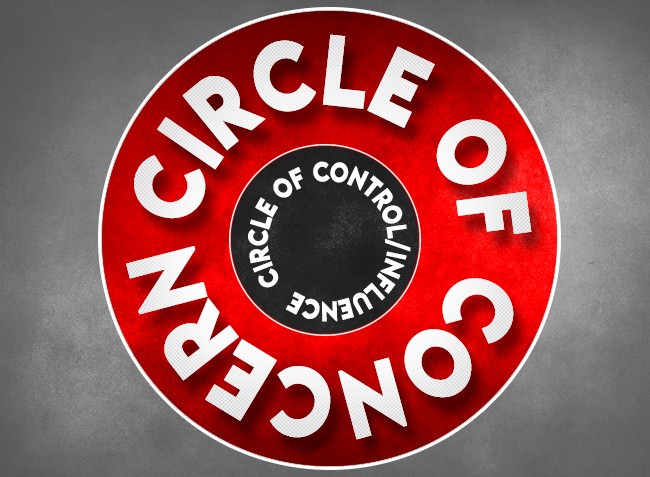
When I was a graduate assistant I shared a desk with a now well-known strength coach by the name of Kaz Kazadi. He turned me onto several books about the way of the samurai. In the book Hagakure, the author speaks of the stories of the samurai, their history, important people involved, and a lot more stories. It gives advice on how to deal with and lead people and still holds as true today as it did several centuries ago.
One part of the book talks about how to address things with people. The author says something to the effect of, “It’s far better to tell someone a story about yourself and what you did or change you made as a result of a certain situation rather than to address them directly about it. It is the person's natural response to push back if you push them. If you lead them to a conclusion and they get it, then the problem is solved. If they do not get to the conclusion, it is of no consequence, as they did not start to revolt against you because of your suggestion.” It also goes on to say that if you are in a situation where it has to be directly addressed, do so in private and one-on-one. Any time that you are more than one-on-one, the person will feel attacked regardless of what was said.
RECENT: Championship Nature Series: The Circles of Concern and Influence
These two points are ones that I based a lot of my coaching career on. I would see issues that arose with the team and address them with different parables. We’d go over a lot of different stories to address a lot of different issues. They never took more than five minutes to tell from start to finish, plus the added time of people talking about them. We would take common parables, historical figures, and anything else that came to mind to illustrate our points. Even if it didn’t get the person on board at the time, it didn’t push them further away, which meant that we could try again from another position if necessary.
The parable is one of the oldest tools to teach. Aesop’s fables were all little parables to teach people right from wrong, what to do in different circumstances, and how to respond to challenges. If the parables work so great for the general population and work great for the samurai, they should work great for athletics, too. Never doubt the power of the parable; it has been teaching lessons to people for millennia. If they didn’t work, the ancient Greeks would have ceased their usage, as they were some pretty smart cats themselves.
I have gone through a professional transition to where more of my time is spent in research and policy rather than coaching. As such, I don’t need my stash of parables any longer and will be releasing them one by one for anyone to take and use (or not, it’s of no matter to me). I wrote something for our staff called the “Championship Nature Series.” It was a series of parables or concepts from books that could be used by any coach at any time to address a need of the team for that current time. As everyone is different, every team is different, and every situation is different, we had a multitude of parables to go with the situation. The first I shared was a revisiting of the circles of control and influence. The second is independent of that, but with a similar message.
Sometimes it takes a slightly different approach to make a lesson click for an athlete, and it’s always best to have different means to get to the same point. Everyone experiences a setback. Some athletes dwell on this and one setback will ruin an entire season or career. They may have nightmares about it, or it may become something that keeps them from being able to sleep at all. It’s not the encountered setback that truly matters, but rather the way they respond. If they step back and see what matters and what can be done, the athlete can often get back on track. This is a shorter talk, as I want to simply address it pointedly and let them go think about it.
There are two times that I normally address this. The first is during the off-season. Just like building strength, speed, power, or conditioning, the best time to build mental perseverance is in the off-season. In the off-season, I’ll usually follow the circles with this talk of resilience very quickly. The second time I use this talk is as a reminder during the season. I use this one especially when I have an athlete who is extremely hard on themselves and feels that they have cost the team the game. Some of these athletes have a tendency to implode, and I like addressing this one to the entire team so they aren’t feeling singled out at the appropriate time (post-lift, when we usually talk about something).
Coming Back
In sport, mistakes will happen. You will drop the ball. You will miss the shot. You will miss the landing. It will occur. Sport is a game of mistakes. What you must remember is that it is not the mistake itself that defines you as a player; it’s how you respond to that mistake. You have the choice of what to do on the next play or how you act as you walk away.
The Circles Revisited
We remember from the circle of concern and circle of influence talk that we should only waste our energy on what we can influence. All things that concern us but are beyond our control should not be worried about. Do you know what you can't do? You can’t influence the past. You can’t change it. It has happened. It’s done. It’s over. Learn from it and move on. Worrying about the mistake won’t do anything to help the next play. Focus on what you can influence, not just what concerns you.
How to Come Back
You have the power to come back after any mistake. You have the choice to move on or dwell on it. You have the choice to decide if you want to worry about the past or move confidently, calmly, and assertively to the future. It’s human nature to worry about what we did and to dwell on it. It was a mistake that pains us, so we don’t dare forget it and we can’t move on. It’s championship nature to decide that it happened and then move on. It’s championship nature to learn and use it to your advantage. It’s championship nature to realize that it’s in your power to come back and dominate the competition. It is championship nature to say, "So what if I made a mistake? I have the power to not make that mistake again." Go and use championship nature to influence championship performance.
Defining Moments
Sport is a game of mistakes. The unfortunate thing is that many athletes think that they will not make a mistake, and when one is made it crushes their psyche. What each athlete must remember is that it’s not the mistake that defines you as an athlete; it’s how you respond to the mistake that defines you. Your response is a choice, not something that is pre-determined. You choose to let it be something that drags you down or something you learn from and move on from. You have the choice to hang your head and let the downward spiral to occur or to say, “Okay, I made a mistake and I’ve learned from it. I’m a champion, and champions don’t let mistakes hold them down.” Take the great Muhammad Ali, for example. There were matches throughout his career that he lost, but he always rebounded. Even after a loss, what did he continue to say? "I am the greatest." He realized that he had the power of choice to feel like a loser for losing or realize that he made a mistake in the match that cost him.
You have the power of choice over your mistakes. A champion learns and lets it go; a normal person lets it get to them and has the downward spiral. You choose how you get to be defined as an athlete. Nothing is inherently bad about losing or making a mistake; it all depends simply on how you view it. You can choose to let it bring you down or choose to hold your head up high and march forth, learning from it all the while. Choose to be a champion.











